Chrysler 2008 Annual Report Download - page 34
Download and view the complete annual report
Please find page 34 of the 2008 Chrysler annual report below. You can navigate through the pages in the report by either clicking on the pages listed below, or by using the keyword search tool below to find specific information within the annual report.-
 1
1 -
 2
2 -
 3
3 -
 4
4 -
 5
5 -
 6
6 -
 7
7 -
 8
8 -
 9
9 -
 10
10 -
 11
11 -
 12
12 -
 13
13 -
 14
14 -
 15
15 -
 16
16 -
 17
17 -
 18
18 -
 19
19 -
 20
20 -
 21
21 -
 22
22 -
 23
23 -
 24
24 -
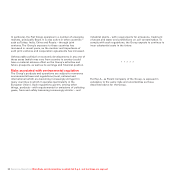 25
25 -
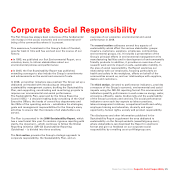 26
26 -
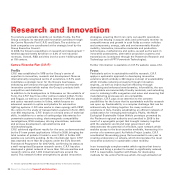 27
27 -
 28
28 -
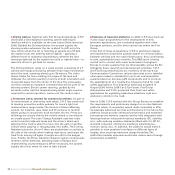 29
29 -
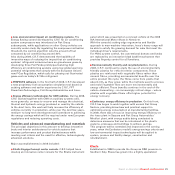 30
30 -
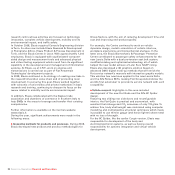 31
31 -
 32
32 -
 33
33 -
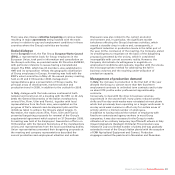 34
34 -
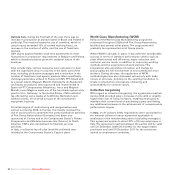 35
35 -
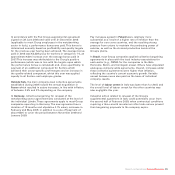 36
36 -
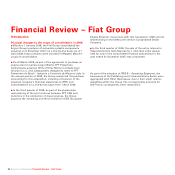 37
37 -
 38
38 -
 39
39 -
 40
40 -
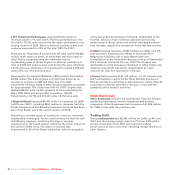 41
41 -
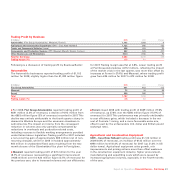 42
42 -
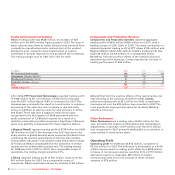 43
43 -
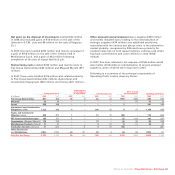 44
44 -
 45
45 -
 46
46 -
 47
47 -
 48
48 -
 49
49 -
 50
50 -
 51
51 -
 52
52 -
 53
53 -
 54
54 -
 55
55 -
 56
56 -
 57
57 -
 58
58 -
 59
59 -
 60
60 -
 61
61 -
 62
62 -
 63
63 -
 64
64 -
 65
65 -
 66
66 -
 67
67 -
 68
68 -
 69
69 -
 70
70 -
 71
71 -
 72
72 -
 73
73 -
 74
74 -
 75
75 -
 76
76 -
 77
77 -
 78
78 -
 79
79 -
 80
80 -
 81
81 -
 82
82 -
 83
83 -
 84
84 -
 85
85 -
 86
86 -
 87
87 -
 88
88 -
 89
89 -
 90
90 -
 91
91 -
 92
92 -
 93
93 -
 94
94 -
 95
95 -
 96
96 -
 97
97 -
 98
98 -
 99
99 -
 100
100 -
 101
101 -
 102
102 -
 103
103 -
 104
104 -
 105
105 -
 106
106 -
 107
107 -
 108
108 -
 109
109 -
 110
110 -
 111
111 -
 112
112 -
 113
113 -
 114
114 -
 115
115 -
 116
116 -
 117
117 -
 118
118 -
 119
119 -
 120
120 -
 121
121 -
 122
122 -
 123
123 -
 124
124 -
 125
125 -
 126
126 -
 127
127 -
 128
128 -
 129
129 -
 130
130 -
 131
131 -
 132
132 -
 133
133 -
 134
134 -
 135
135 -
 136
136 -
 137
137 -
 138
138 -
 139
139 -
 140
140 -
 141
141 -
 142
142 -
 143
143 -
 144
144 -
 145
145 -
 146
146 -
 147
147 -
 148
148 -
 149
149 -
 150
150 -
 151
151 -
 152
152 -
 153
153 -
 154
154 -
 155
155 -
 156
156 -
 157
157 -
 158
158 -
 159
159 -
 160
160 -
 161
161 -
 162
162 -
 163
163 -
 164
164 -
 165
165 -
 166
166 -
 167
167 -
 168
168 -
 169
169 -
 170
170 -
 171
171 -
 172
172 -
 173
173 -
 174
174 -
 175
175 -
 176
176 -
 177
177 -
 178
178 -
 179
179 -
 180
180 -
 181
181 -
 182
182 -
 183
183 -
 184
184 -
 185
185 -
 186
186 -
 187
187 -
 188
188 -
 189
189 -
 190
190 -
 191
191 -
 192
192 -
 193
193 -
 194
194 -
 195
195 -
 196
196 -
 197
197 -
 198
198 -
 199
199 -
 200
200 -
 201
201 -
 202
202 -
 203
203 -
 204
204 -
 205
205 -
 206
206 -
 207
207 -
 208
208 -
 209
209 -
 210
210 -
 211
211 -
 212
212 -
 213
213 -
 214
214 -
 215
215 -
 216
216 -
 217
217 -
 218
218 -
 219
219 -
 220
220 -
 221
221 -
 222
222 -
 223
223 -
 224
224 -
 225
225 -
 226
226 -
 227
227 -
 228
228 -
 229
229 -
 230
230 -
 231
231 -
 232
232 -
 233
233 -
 234
234 -
 235
235 -
 236
236 -
 237
237 -
 238
238 -
 239
239 -
 240
240 -
 241
241 -
 242
242 -
 243
243 -
 244
244 -
 245
245 -
 246
246 -
 247
247 -
 248
248 -
 249
249 -
 250
250 -
 251
251 -
 252
252 -
 253
253 -
 254
254 -
 255
255 -
 256
256 -
 257
257 -
 258
258 -
 259
259 -
 260
260 -
 261
261 -
 262
262 -
 263
263 -
 264
264 -
 265
265 -
 266
266 -
 267
267 -
 268
268 -
 269
269 -
 270
270 -
 271
271 -
 272
272 -
 273
273 -
 274
274 -
 275
275 -
 276
276 -
 277
277 -
 278
278 -
 279
279 -
 280
280 -
 281
281 -
 282
282 -
 283
283 -
 284
284 -
 285
285 -
 286
286 -
 287
287 -
 288
288 -
 289
289 -
 290
290 -
 291
291 -
 292
292 -
 293
293 -
 294
294 -
 295
295 -
 296
296 -
 297
297 -
 298
298 -
 299
299 -
 300
300 -
 301
301 -
 302
302 -
 303
303 -
 304
304 -
 305
305 -
 306
306 -
 307
307 -
 308
308 -
 309
309 -
 310
310 -
 311
311 -
 312
312 -
 313
313 -
 314
314 -
 315
315 -
 316
316 -
 317
317 -
 318
318 -
 319
319 -
 320
320 -
 321
321 -
 322
322 -
 323
323 -
 324
324 -
 325
325 -
 326
326 -
 327
327 -
 328
328 -
 329
329 -
 330
330 -
 331
331 -
 332
332 -
 333
333 -
 334
334 -
 335
335 -
 336
336 -
 337
337 -
 338
338 -
 339
339 -
 340
340 -
 341
341 -
 342
342 -
 343
343 -
 344
344 -
 345
345 -
 346
346 -
 347
347 -
 348
348 -
 349
349 -
 350
350 -
 351
351 -
 352
352 -
 353
353 -
 354
354 -
 355
355 -
 356
356
 |
 |
Report on Operations Human Resources 33
There was also intense collective bargaining at various levels
resulting in major agreements being reached with the trade
unions in relation to pay and employment conditions in those
countries where the Group’s activities are located.
Social dialogue
At the European level, the Fiat Group European Works Council
(EWC), a representative body for Group employees in the
European Union, took part in information and consultation on
the Group’s activities, as provided under EU Directive 45/94/EC,
with particular reference to issues having a transnational
impact. The EWC, which has 30 members, was established in
1997 and its composition reflects the geographic distribution
of Group employees in Europe. A meeting was held with the
EWC’s select committee in May. At the annual plenary meeting,
held on 20 and 21 November 2008, management
representatives gave a presentation of Group results, the
principal areas of development, market evolution and
production trend in 2008, in addition to the outlook for 2009.
In Italy, dialogue with the trade unions continued at both
national and local level. At a meeting with the CEO on 23 July
2008, the General Secretaries of the Italian metalworkers
unions (Fim, Fiom, Uilm and Fismic), together with local
representatives from the Turin area, were updated on the
progress of Fiat’s relaunch and development plan and the
initiatives taken to achieve the Group’s stated targets. In
November, the trade unions (Fim, Fiom, Uilm and Fismic)
presented bargaining proposals for renewal of the Group’s
supplemental agreement which expired on 31 December 2008.
A meeting was held at the Employers’ Association of Turin on
16 December with the General Secretaries of the metalworkers
unions and representatives from the local coordinating bodies.
Union representatives presented their bargaining proposals at
the meeting and company representatives described the
current production and employment situation and outlook.
Discussion was also related to the current economic
environment and, in particular, the significant market
turbulence affecting the Group’s business activities, which
caused a sizeable drop in orders and, consequently, a
significant reduction in production levels in the latter part of
the year. At the conclusion of the meeting, the Company stated
its unwillingness to negotiate on the basis of the bargaining
proposals presented by the unions, which it considered
incompatible with current economic reality. However, the
Company did indicate its willingness to negotiate on
employment conditions and evaluate, together with the unions,
the most appropriate method for addressing the fall in
business volumes and the resulting under-utilisation of
production capacity.
Management of production demand
In Italy, the increase in production in the first half of the year
allowed the Group to convert more than 900 fixed-term
employment contracts to unlimited term contracts and to take
on about 370 youths under professional apprenticeship
contracts.
Conversely, to deal with the drop in business volumes
experienced in the second half, many plants reduced weekly
shifts and five-day work weeks were reinstated at most plants
which had previously been operating on a longer work week. A
six-day work week remains in effect only for certain areas of
activity and for a limited number of employees.
In addition to having reduced the number of employees with
fixed-term contracts and agency workers in most Group
companies, it was also necessary for the Group to make
utilisation of an ordinary temporary layoff benefit scheme in Italy
(
Cassa Integrazione Guadagni Ordinaria
). This procedure was
initiated in July at a limited number of plants and was gradually
extended to most of the Group’s Italian plants (with the exception
of CNH Agricultural Equipment and Comau). Production
stoppages reached the peak level in November and December.
